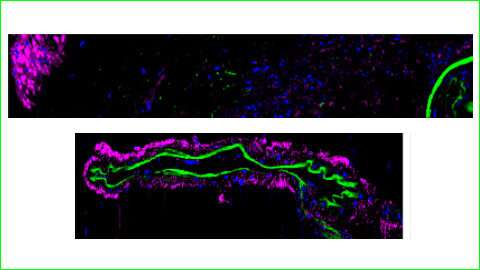
The arachnoid is one of the three meninges, or brain membranes, and is responsible for mechanically and immunologically protecting the brain and the spinal cord. It allows communication between the cerebrospinal fluid (which bathes the brain and the spinal cord) and the cerebral blood vessels, and controls several crucial physiological responses in the brain, such as supplying nutrients and eliminating toxic waste.
Researchers from the Laboratory of Cerebral and Peripheral Vascular Diseases, at the Department of Pharmacology, Therapeutics and Toxicology, and the Institut de Neurociències of the Universitat Autònoma de Barcelona (INc-UAB) discovered that the arachnoid is a very important source of sphingosine-1-phosphate (S1P), a lipid that had hitherto been found mainly in red blood cells. Researchers show for the first time that this fat, once released from the arachnoid, produces the necessary vasoconstriction in the cerebral blood vessels for the regulation of blood flow. In addition, this process facilitates the elimination of waste substances, by generating a vascular pulsation that would help expel them through the cerebrospinal fluid. The research, done on mice and human samples, has been published in the Journal of Cerebral Blood Flow and Metabolism.
The results of the study are not only relevant to understanding the physiological role of this substance in the brain blood vessels. They also suggest that in those pathological states that present the accumulation of toxic substances, such as Alzheimer’s disease, SP1 in the arachnoid could be altered. This would explain why beta-amyloid peptide clearance is reduced in Alzheimer’s patients, altering proper brain function and causing cognitive dysfunction and dementia.
Source: Read Full Article
